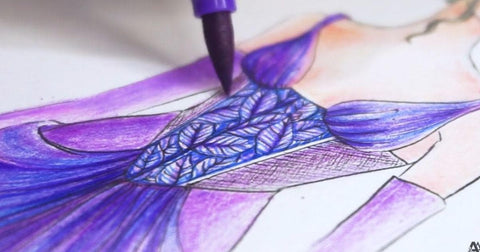The Dark and the Divine: The Art and Legacy of Caravaggio
Last Updated: November 14, 2024
“All works, no matter what or by whom painted, are nothing but bagatelles and childish trifles unless they are made and painted from life, and there can be nothing better than to follow nature.”
Close-ups of intense facial expressions, a disturbing play on light and dark colors, a moment of vivid emotion frozen in time. These are some phrases that describe the famous paintings of Caravaggio, an Italian painter born in Milan with the name Michelangelo Merisi da Caravaggio.
Known as one of the most popular and revolutionary painters of the 17th century, Caravaggio led a turbulent and scandalous life. Despite all of his troubles, he still ended up becoming a pioneer artist who contributed to the creation of baroque painting techniques.
In this guide, we’ll bring you through his early life, Caravaggio’s works of art, and how his unique style was truly the only one of its kind in 17th-century Italy.

A Life of Passion and Turmoil
Born in September 1571, Caravaggio lived with his parents in Milan. His father, Michelangelo Merisi was an architect who married a woman named Lucia in the same district. A few years after Caravaggio was born, the family left Milan and stayed in the Caravaggio commune in Italy to escape the bubonic plague.
Their efforts were in vain as Caravaggio’s father died a year later, along with every other male family member. This was the time in his life when a fiery temperament and sense of abandonment no doubt took place in Caravaggio’s life.
Seven years later, Lucia passed away as well, leaving a young 13-year-old Caravaggio orphaned. He sought a 4-year apprenticeship with Simone Peterzano, a Lombard painter who taught him more about the works of other Renaissance artists like Titian and Da Vinci.
These learnings shaped Caravaggio’s view of art. For instance, here is one of Caravaggio’s notable works, a painting titled The Death of the Virgin. It depicts a deceased woman lying amidst people weeping for her death.

Art, Fame, and Trouble with the Law
In 1592, Caravaggio left for Rome and would never see his hometown again. He started working in a factory where he painted flowers and fruits for the owner, Guiseppe Cesari.
This was the first time in Caravaggio’s life that he began to work on concepts of realism in his artworks. After a while, it also inspired him to find his way in the world, and he soon met other notable people in the art world who helped get his artworks noticed by the public.
Unfortunately, Caravaggio was also plagued with violent thoughts and tendencies. During his rise to fame as an artist, he would commit violent assaults on other people and even end up killing a man during a sword fight/brawl in Rome over a gambling debt.
As someone attracted to gruesome violence and the darker side of the world, you’ll find these themes present as well in Caravaggio’s paintings. An example would be his painting titled Judith Beheading Holofernes, where haunting light contrasts are applied alongside realistic images.
Realism: Painting Life as It Was
All artists have their trademark styles and techniques; realism was one of Caravaggio’s. This essentially highlights lifelike, realistic images on canvas.
One of the most famous paintings associated with Caravaggio is The Calling of Saint Peter. This painting depicts the moment when Saint Peter was called to be one of Jesus’ apostles, showing an image of Peter sitting among other people, staring at the light streaming in through a window.
Caravaggio used real models for this artwork, contributing to his favored realism techniques.

A Man’s Darkness on Canvas
Plenty of aspiring artists in Italy spent time in Rome. It was a place to learn and bask in the success of the Catholic faith since new churches and altars were being built all the time. Images of angels and saints heavily influenced Caravaggio’s artworks, but not necessarily in an ethereal, angelic manner.
During Caravaggio’s time in Rome, he was among almost two thousand other artists trying to find their way in life. Surviving was a challenge because the competition was so fierce that oftentimes, disagreements would turn into violent brawls. These experiences fueled Caravaggio’s already fragile temperament, which found its way into his works of art.
Another famous painting that reflects Caravaggio’s turbulent life was The Crucifixion of Saint Peter, depicting an image of the saint being crucified upside-down because he felt unworthy of being killed the same way Jesus was. This painting plays with the techniques of tenebrism and chiaroscuro, also known as strong contrasts between light and dark.

Caravaggio’s Immortal Legacy
Caravaggio’s life as a troubled painter and fugitive from the law shows how such traumatic experiences can turn into beautifully haunting works of art.
From realism to tenebrism and chiaroscuro, Caravaggio’s painting techniques became trailblazing forms for other artists to learn. He became the founder of Baroque art and is now one of the most popular artists in Italian history.
For more artist inspiration and techniques, drop by The Creative Corner.








